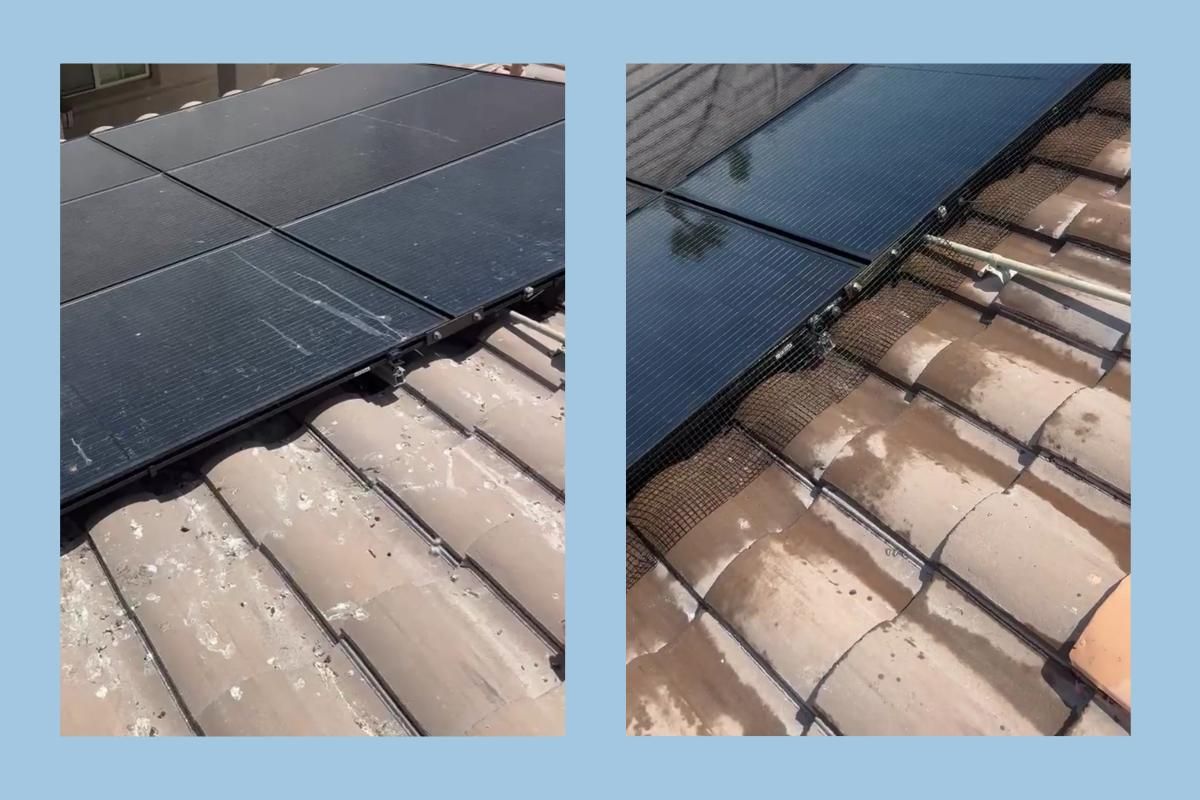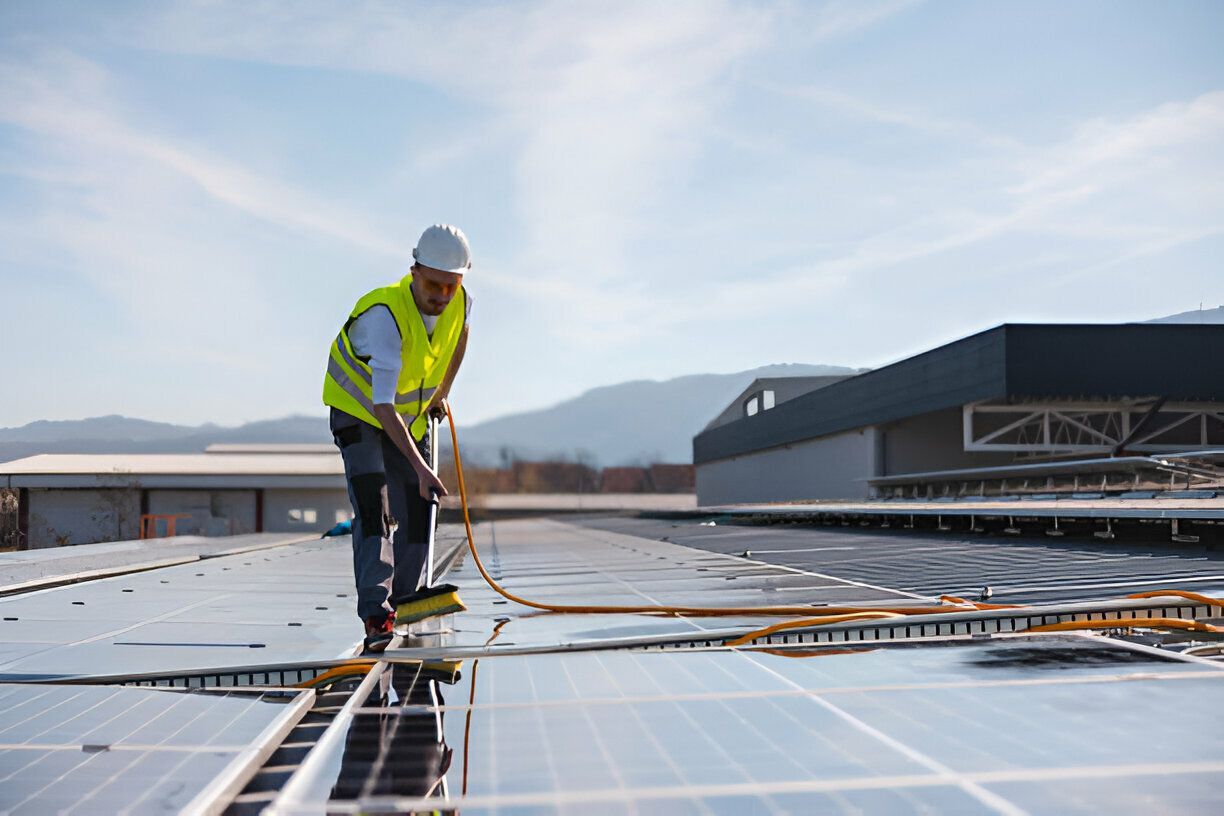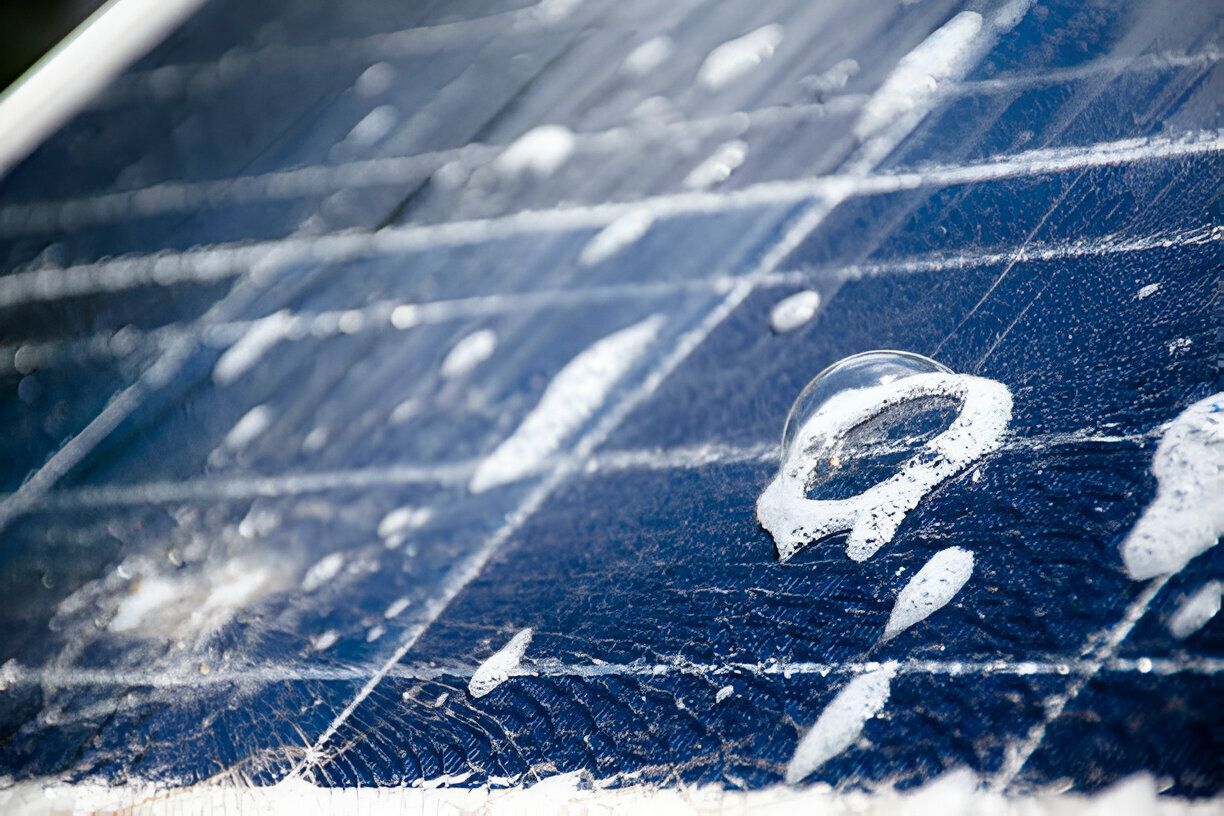Why Birds Nest Under Solar Panels and How to Stop Them
This is a subtitle for your new post
Birds nesting under rooftop solar panels is an increasingly common problem for homeowners, especially in areas with strong year-round sunlight. From pigeons to small songbirds, the space beneath solar arrays offers the perfect combination of warmth, shelter, and protection from predators. As local experts in bird control, bird netting installation, and nest removal services, we’ve seen firsthand how quickly a simple nesting issue can escalate into damage, safety concerns, and long-term system problems. This article explains why birds nest under solar panels, the risks they create, and the most effective, humane ways to keep them away.
⸻
Understanding Why Birds Choose Solar Panels
The Shelter Solar Panels Provide
The space beneath solar panels naturally creates a shaded, enclosed area. For birds - especially pigeons - this feels like a ready-built nest box. The height, dryness, and protection from wind and predators make it ideal for breeding and roosting.
How Heat, Shade, and Structure Attract Birds
Solar panels generate heat, especially during sunny afternoons. That warmth radiates into the space beneath the panels, making them comfortable for birds looking for refuge. The overhang provides shade during hot days and a dry retreat during rain. Combined, these factors create one of the most desirable nesting spots on a residential property.
Common Birds That Nest Under Solar Panels
While several species may take shelter, pigeons are the most frequent offenders. Their nesting habits, tendency to return to familiar spaces, and ability to squeeze into narrow gaps make them particularly persistent. In some neighborhoods, sparrows and starlings also take advantage of these openings, but pigeons cause the majority of issues that require professional bird netting or pigeon control services.
⸻
The Problems Caused by Nesting Birds
Damage to Wiring, Panels, and Roof Surfaces
Birds bring sticks, debris, feathers, and various materials to create nests. These objects can interfere with solar panel wiring, block airflow, or even wedge into electrical components. Pigeons also peck and tug at cables, which can lead to shorts or exposed wiring. Over time, this damage may reduce efficiency or require costly repairs.
Fire Risks From Debris and Nesting Materials
Nesting materials tend to be highly flammable. When combined with electrical wiring, trapped heat, or dry dust, this environment becomes a potential fire hazard. Professional bird nest removal ensures that debris is fully cleared from beneath the panels, reducing the risk of overheating or combustible material buildup.
Noise, Droppings, and Home Sanitation Issues
Pigeons and other birds are noisy, especially early in the morning. Nesting increases activity and noise as birds shuttle back and forth. Droppings accumulate quickly and can stain surfaces, corrode roofing materials, and create odor issues. Large amounts of bird waste also attract insects and other pests. For many homeowners, sanitation concerns are a primary reason to seek bird control or netting services.
⸻
Why Bird Nesting Leads to Efficiency Loss
Airflow Blockages and Heat Retention
Solar panels are designed with airflow in mind. Proper ventilation underneath helps regulate temperature and maintain performance. When birds fill the space with nesting material, airflow becomes restricted. This causes panels to run hotter, decreasing their efficiency.
Impact of Debris and Droppings on Panel Performance
Debris and droppings accumulate on and around solar panels. A dirty surface allows less sunlight to reach the photovoltaic cells, reducing output. Pair this with the heat issues caused by nest obstruction, and the overall system may experience noticeable drops in performance.
⸻
How Bird Netting and Barrier Systems Work
Professional Bird Netting Explained
Bird netting is one of the most effective long-term solutions for stopping pigeons and other birds from nesting under solar panels. A properly installed netting system creates a clean perimeter barrier that prevents access while still allowing airflow and system ventilation. Professional-grade netting is durable, UV-resistant, and designed to withstand weather over time.
Types of Barriers Used in Bird Control
In addition to netting, installers may use clips, screens, or protective skirts that seamlessly connect to the solar panel frame. These barriers block all entry points without drilling into the panels or roof. The key is ensuring a tight, uniform fit so birds cannot push through gaps or lift loose edges.
Why DIY Fixes Often Fail
Tape, makeshift mesh, and lightweight materials may hold up temporarily but rarely provide long-term protection. Birds, especially pigeons, are persistent and skilled at finding weak points. DIY attempts often leave gaps, shift over time, or inadvertently trap debris. Professional bird netting ensures the installation is secure, breathable, and properly fitted.
⸻
Safe and Humane Bird Nest Removal Services
Inspection and Removal Process
When birds have already begun nesting, removal must be done carefully and humanely. Professionals inspect the area, identify active nests, and determine whether eggs or chicks are present. Removal is performed according to local regulations, ensuring the process is safe for both birds and occupants.
Cleaning, Sanitizing, and Restoring the Area
After removal, the area beneath the solar panels must be thoroughly cleaned. This includes clearing nesting debris, washing droppings, and sanitizing surfaces to reduce bacteria and odors. Once cleaned, bird netting or barrier systems are installed to prevent birds from returning.
⸻
Long-Term Prevention for Homes With Solar Panels
Routine Solar Panel Cleaning
Regular cleaning reduces buildup from droppings and debris, which can attract more birds. Clean panels also perform better, improving overall energy output.
Ongoing Pigeon Control and Property Monitoring
Some homes require periodic inspections or maintenance to ensure netting remains intact and no new access points have opened. Ongoing pigeon control around the property - including removing food sources and monitoring roosting spots - helps prevent reinfestation.
⸻
Conclusion
Birds nest under solar panels because the space provides shelter, warmth, and protection, but the issues that follow can be costly and disruptive. With professional bird netting, proper nest removal, and ongoing maintenance, homeowners can protect their solar investment and prevent long-term damage.
For safe, effective, and humane bird control around your solar panels, feel free to
contact us anytime.





